"Lake Garda"
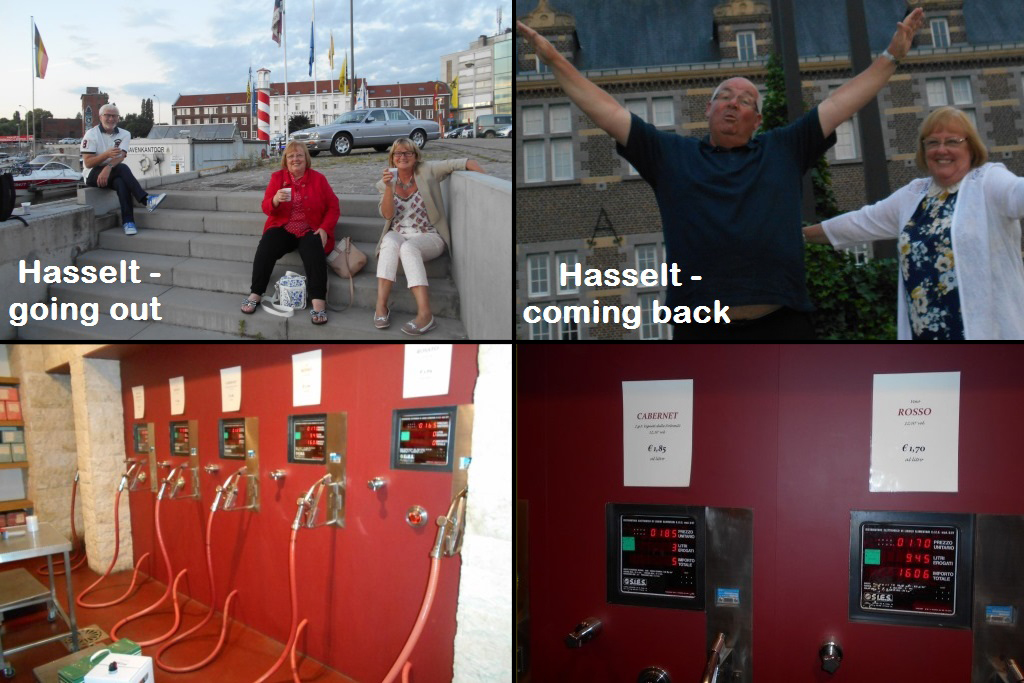 We spent our first and last nights of the holiday in the Holiday Inn at Hasselt in Germany, a nice hotel near both the marina and the town; as you can see we were in good spirits at both ends of the holiday. On our first day in Lake Garda we relaxed in the morning and whilst the girls had a look round the town in the afternoon we went to the Cantina Toblino at Sarche to sample some wines and cheeses of Italy; the most memorable sight here was the wine pumps used to dispense wine into customers containers which was measured out just like getting petrol for your car. This is actiually a very good idea and makes the most of recycling by using bottles and containers over and over again; also looking at the price for a litre it's a lot cheaper too.
We spent our first and last nights of the holiday in the Holiday Inn at Hasselt in Germany, a nice hotel near both the marina and the town; as you can see we were in good spirits at both ends of the holiday. On our first day in Lake Garda we relaxed in the morning and whilst the girls had a look round the town in the afternoon we went to the Cantina Toblino at Sarche to sample some wines and cheeses of Italy; the most memorable sight here was the wine pumps used to dispense wine into customers containers which was measured out just like getting petrol for your car. This is actiually a very good idea and makes the most of recycling by using bottles and containers over and over again; also looking at the price for a litre it's a lot cheaper too.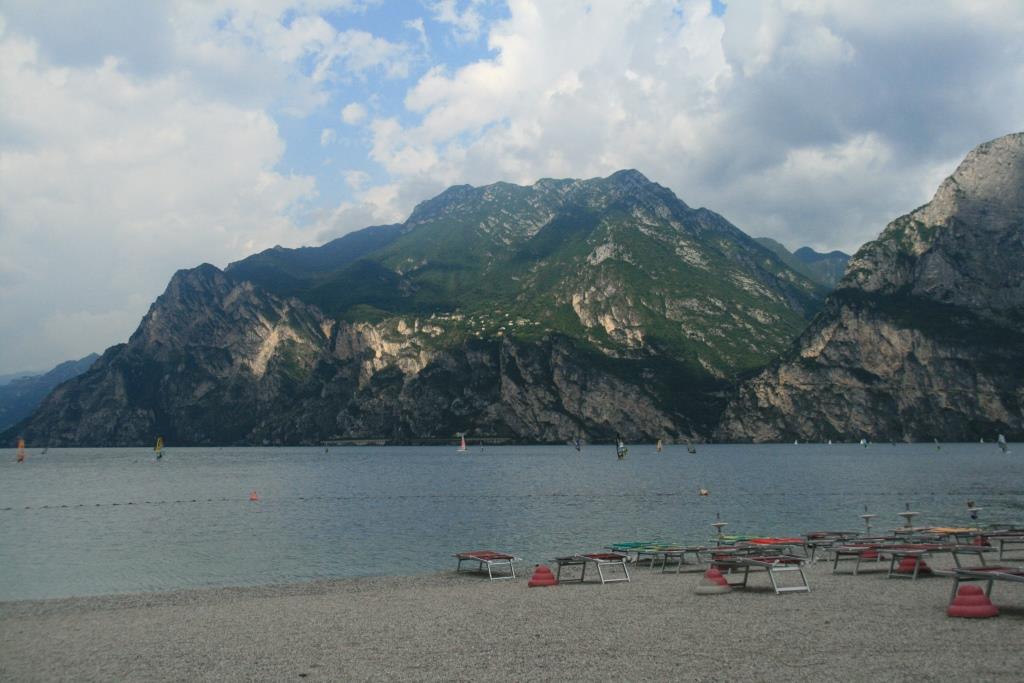 Lake Garda is a truly beautiful place to visit with the largest lake in Italy and mountains all around; naturally it is a magnet for visitors from all over but also for Italians themselves who flock there during their vacations. There is a regular ferry service that you can hop off and on at the many stops from Riva del Garda at the top (north) and Peschiera del Garda at the bottom (south). This is a great way to see the different places around the lake although we only used it for the short trip to Riva from Torboli.
Lake Garda is a truly beautiful place to visit with the largest lake in Italy and mountains all around; naturally it is a magnet for visitors from all over but also for Italians themselves who flock there during their vacations. There is a regular ferry service that you can hop off and on at the many stops from Riva del Garda at the top (north) and Peschiera del Garda at the bottom (south). This is a great way to see the different places around the lake although we only used it for the short trip to Riva from Torboli.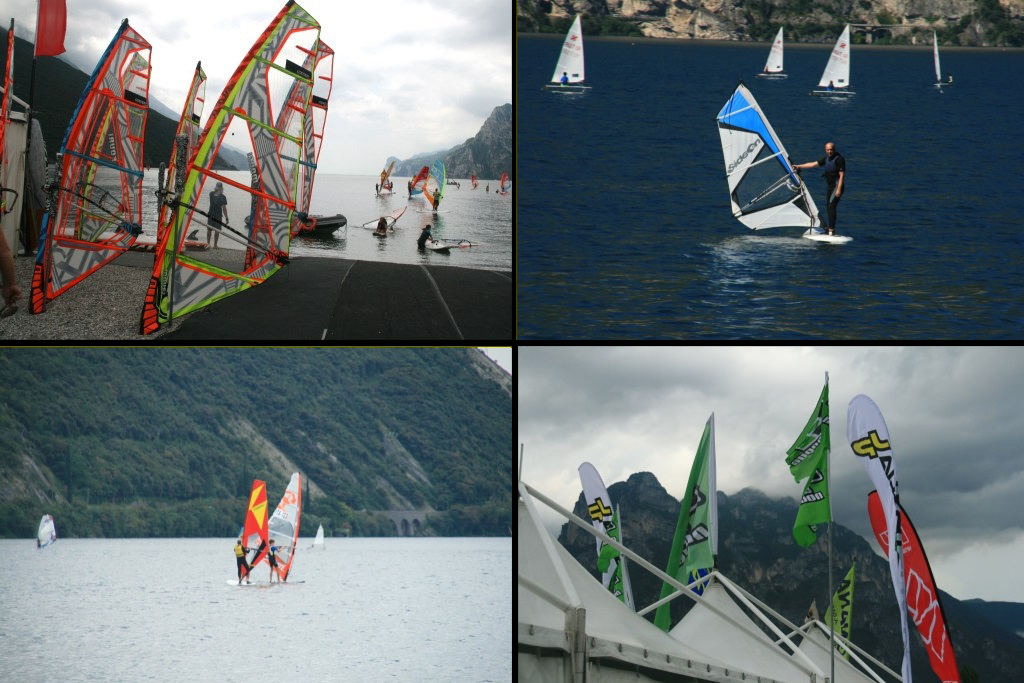 The place we stayed (Torboli) is a center for water sports, including sailing, windsurfing and motorboating. There is a windsurfing school here and being the holiday season there were some very experienced wind-surfers as well as many youngsters being trained.
The place we stayed (Torboli) is a center for water sports, including sailing, windsurfing and motorboating. There is a windsurfing school here and being the holiday season there were some very experienced wind-surfers as well as many youngsters being trained.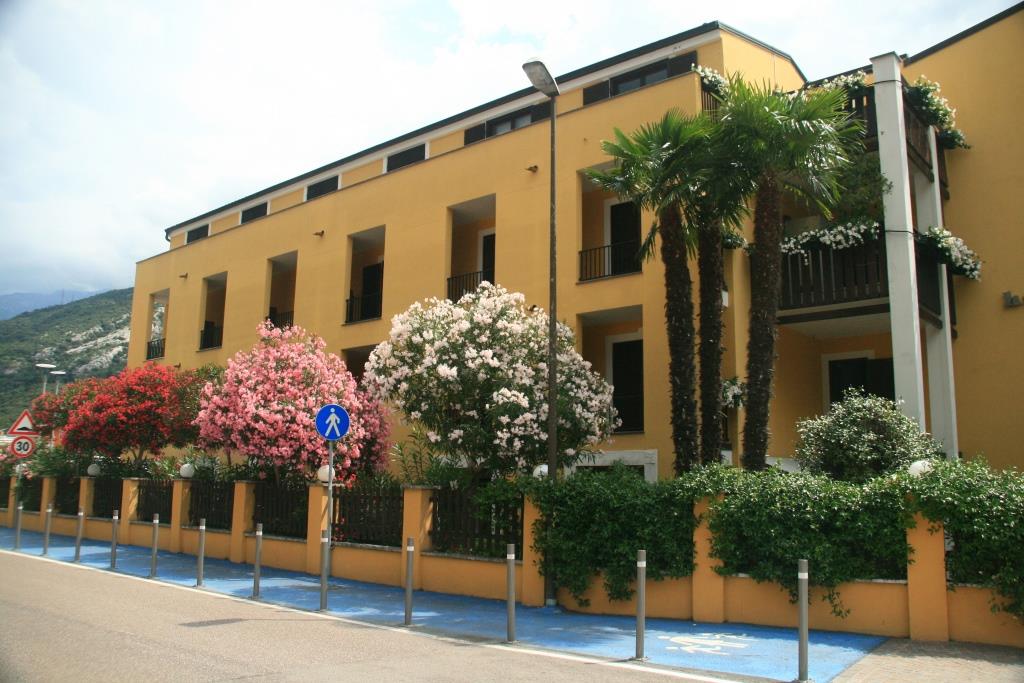 Our hotel at Torboli (the Club Hotel La Vela above) was full of many different nationalities and was comfortable with a pool, restaurant and bar. The food was decidedly average which is something we have experienced quite often where the hotel is catering for so many guests of different tastes, but we survived and generally enjoyed our stay here. There were the usual tourists who got up at the crack of dawn and put their towels on the sun loungers but as we didn't use the pool it made little difference to us; I can imagine it could have been very annoying if we had wanted to use the pool as all the sunloungers were taken by 8 in the morning.
Our hotel at Torboli (the Club Hotel La Vela above) was full of many different nationalities and was comfortable with a pool, restaurant and bar. The food was decidedly average which is something we have experienced quite often where the hotel is catering for so many guests of different tastes, but we survived and generally enjoyed our stay here. There were the usual tourists who got up at the crack of dawn and put their towels on the sun loungers but as we didn't use the pool it made little difference to us; I can imagine it could have been very annoying if we had wanted to use the pool as all the sunloungers were taken by 8 in the morning.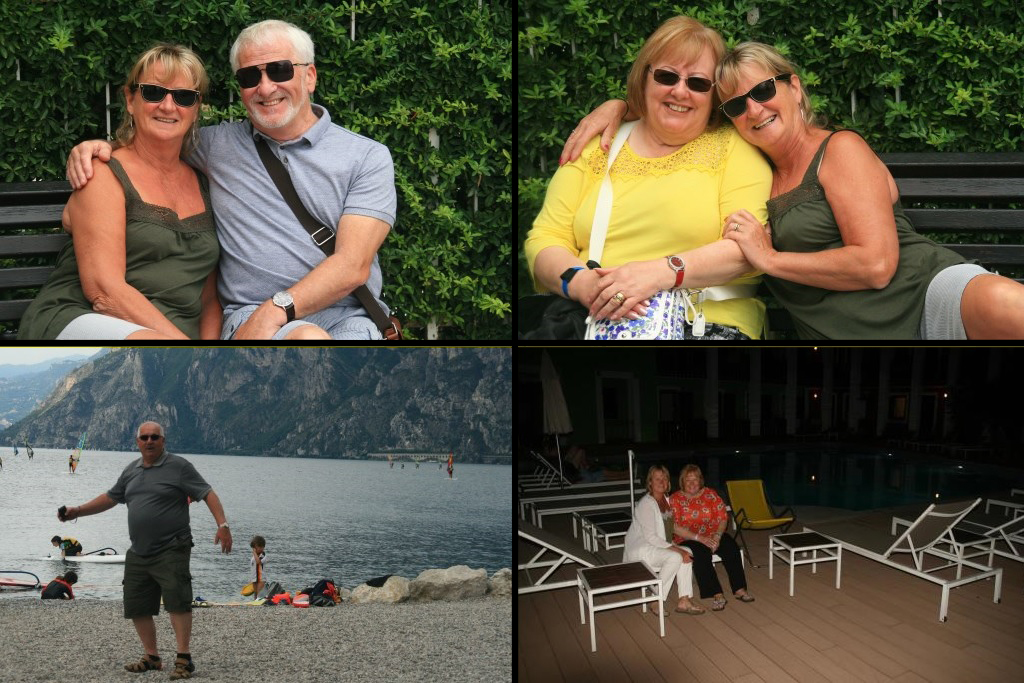 Typical holiday poses; Nick, where's your board; the hotel poolside at night.
Typical holiday poses; Nick, where's your board; the hotel poolside at night.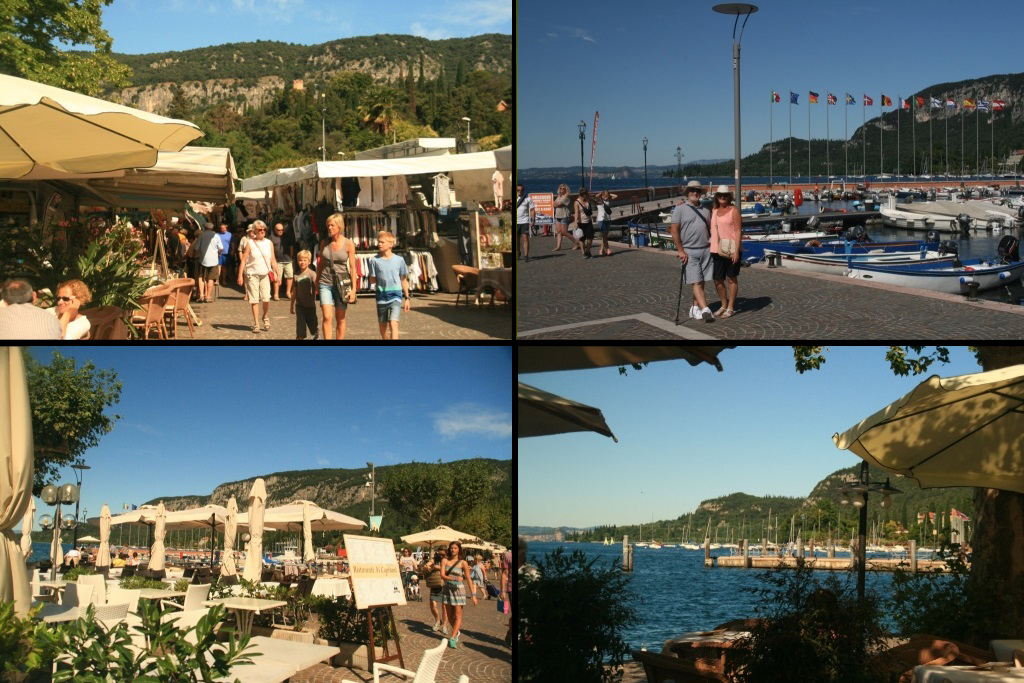 On our way to Sirmioni on one of the trips, we stopped off at the town of Garda where we had a look around the market, strolled along the boulevade and enjoyed a refreshing drink and snack in one of the many lakeside restaurants. What better way to while away the time than a cool beer and watching the world go by.
On our way to Sirmioni on one of the trips, we stopped off at the town of Garda where we had a look around the market, strolled along the boulevade and enjoyed a refreshing drink and snack in one of the many lakeside restaurants. What better way to while away the time than a cool beer and watching the world go by.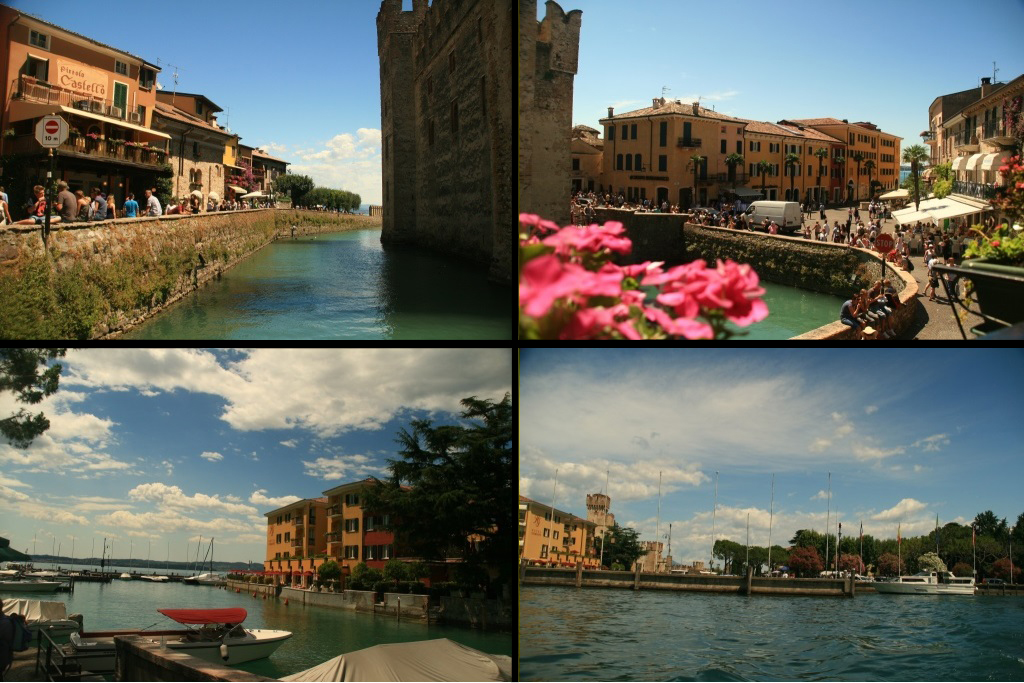 We came to Sirmioni on our last Italy trip with Leger (Picturebook Italy) and, although a little bit touristy it is beautiful and we had our lunch once again in a picturesque restaurant called Piccolo Castello overlooking the moat and the castle. There are some hotels and shops located right in the centre of the town and I think the presence of cars and vans driving through the rather narrow streets was a shame. This town should have an external car-park (which it does) and cars should be banned, at least during the holiday season, from coming over the bridge into the town. I think I've said this before about other small Italian towns which are spoilt by the necessities of the modern world.
We came to Sirmioni on our last Italy trip with Leger (Picturebook Italy) and, although a little bit touristy it is beautiful and we had our lunch once again in a picturesque restaurant called Piccolo Castello overlooking the moat and the castle. There are some hotels and shops located right in the centre of the town and I think the presence of cars and vans driving through the rather narrow streets was a shame. This town should have an external car-park (which it does) and cars should be banned, at least during the holiday season, from coming over the bridge into the town. I think I've said this before about other small Italian towns which are spoilt by the necessities of the modern world.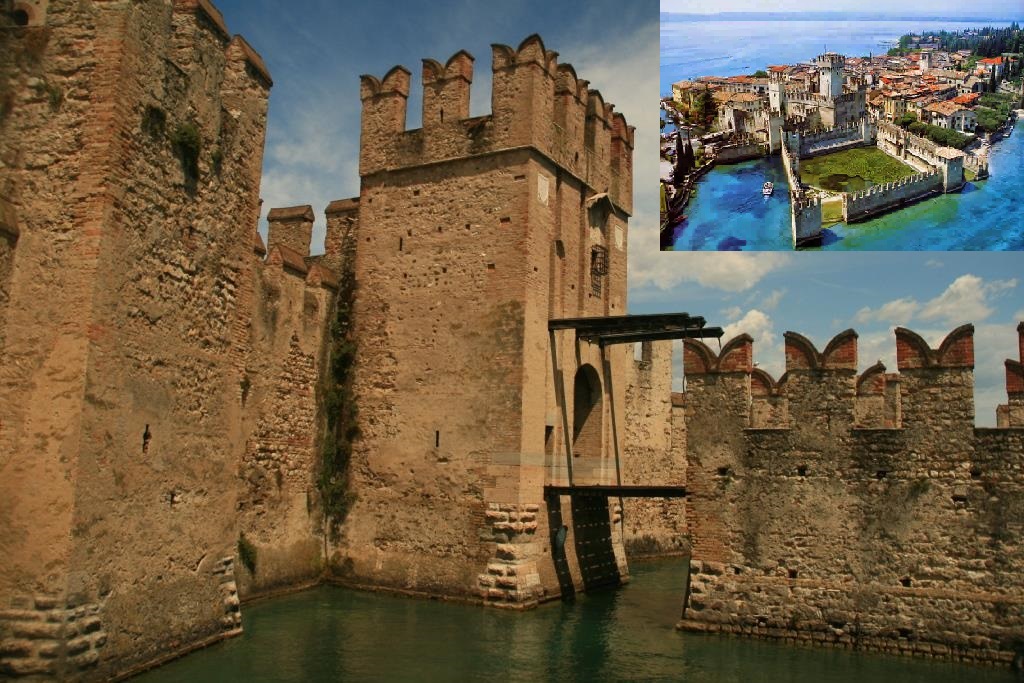 I've previously written about the castle at Sirmioni (Italy12 - Picturebook Italy); known as Scaliger Castle (Rocca Scaligera) it was built in the 13th century by the Scaliger family who ruled the area by force for over 150 years from early 1200's to late 1300's. This medieval port fortification was used by the Scaliger fleet as it is strategically placed at the entrance to the peninsula. The picture inset shows the extent of the castle which you can't see from ground level.
I've previously written about the castle at Sirmioni (Italy12 - Picturebook Italy); known as Scaliger Castle (Rocca Scaligera) it was built in the 13th century by the Scaliger family who ruled the area by force for over 150 years from early 1200's to late 1300's. This medieval port fortification was used by the Scaliger fleet as it is strategically placed at the entrance to the peninsula. The picture inset shows the extent of the castle which you can't see from ground level.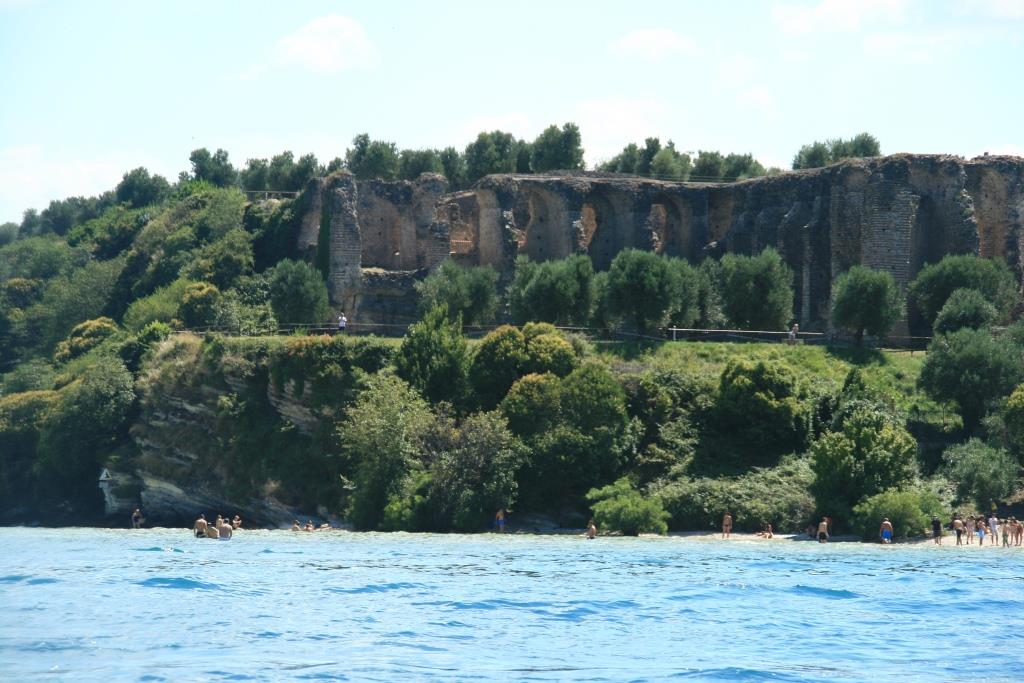 Similarly, there is more detail of the Grotto of Catullus in the Pictuerbook Italy blog; it is neither a grotto nor did the Roman poet Catullus ever live there. The villa itself was built around 150AD (Catullus died in 54BC) and the main sights to be seen are the supports for what was once a patrician villa for a rich family. It is so dilapidated that it does not appear that anyone has been able to construct a full picture of what it looked like when it was originally built, or at least I have not been able to find it
Similarly, there is more detail of the Grotto of Catullus in the Pictuerbook Italy blog; it is neither a grotto nor did the Roman poet Catullus ever live there. The villa itself was built around 150AD (Catullus died in 54BC) and the main sights to be seen are the supports for what was once a patrician villa for a rich family. It is so dilapidated that it does not appear that anyone has been able to construct a full picture of what it looked like when it was originally built, or at least I have not been able to find it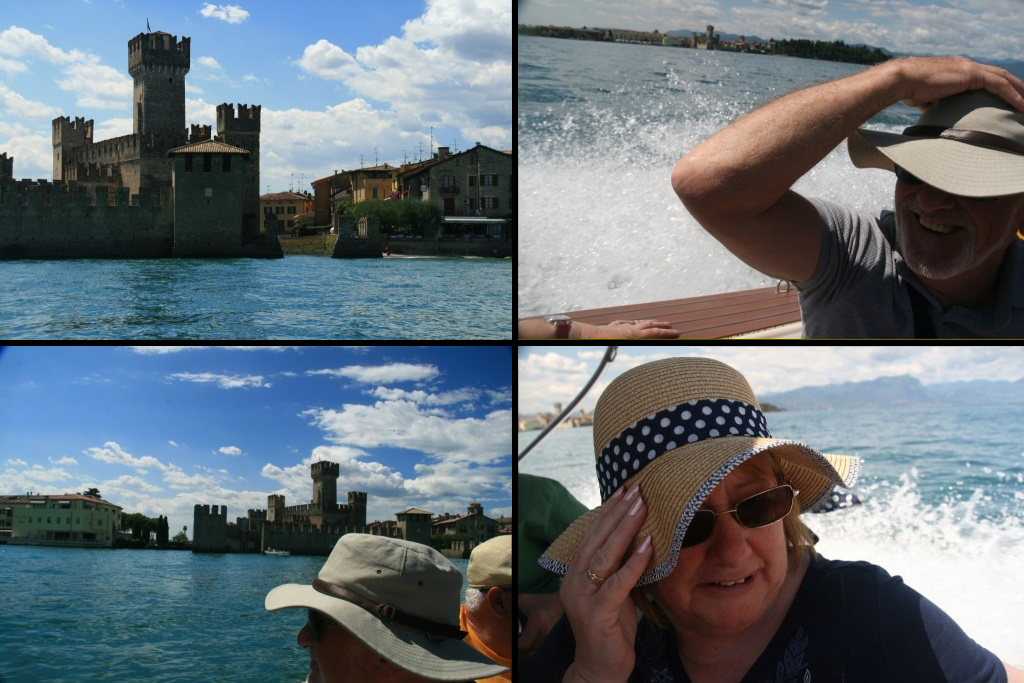 After lunch we had a trip on a speedboat on the lake and were taken to a 'spot' where we should see sulphur bubbles rising from the world famous hot springs. It was quite funny to see several boats hovering in a circle around this 'spot' (bu----ed if I could see or smell sulphur bubbles) before the driver put his foot down and took us at high speed back to the coach park outside Sirmioni. I researched this and found that the presence of hot springs and the baths that came from it made this area around Lake Garda a tourist destination as early as the 1st century A.D. when the Romans settled here. Sirmione’s natural spring of hot sulphuric water is called the Boiola and is located about 20 metres below ground in Lake Garda (the 'spot') close to the Grotto of Catullus.
After lunch we had a trip on a speedboat on the lake and were taken to a 'spot' where we should see sulphur bubbles rising from the world famous hot springs. It was quite funny to see several boats hovering in a circle around this 'spot' (bu----ed if I could see or smell sulphur bubbles) before the driver put his foot down and took us at high speed back to the coach park outside Sirmioni. I researched this and found that the presence of hot springs and the baths that came from it made this area around Lake Garda a tourist destination as early as the 1st century A.D. when the Romans settled here. Sirmione’s natural spring of hot sulphuric water is called the Boiola and is located about 20 metres below ground in Lake Garda (the 'spot') close to the Grotto of Catullus.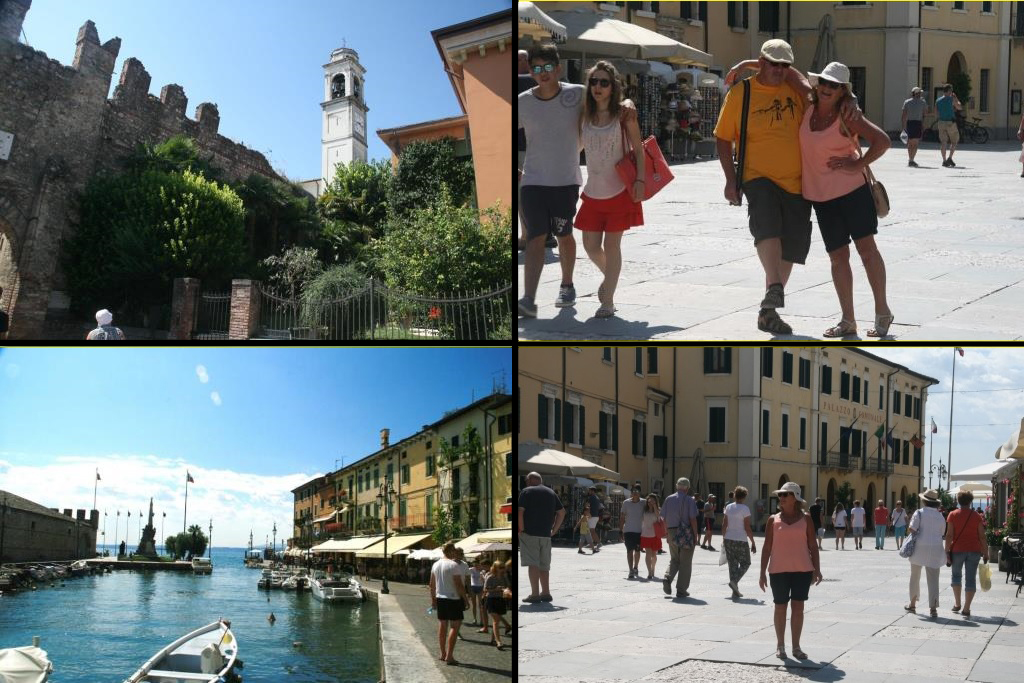 On the way back from Sirmioni we stopped off in the medieval walled 'small city' of Lazise dating back to 1370; this, like many Italian towns is very picturesque and has a 12th Century Church (San Nicolo), a lovely little harbour and some shops. During the 13th and 14th centuries, Lazise was occupied by the Scaligeri of Verona who built the adjacent castle and encircled the town with walls. In 1405, it came under Venetian rule until Napoleon conquered northern Italy. The castle is privately owned and used for banquets and conferences; we couldn't get to see it unfortunately.
On the way back from Sirmioni we stopped off in the medieval walled 'small city' of Lazise dating back to 1370; this, like many Italian towns is very picturesque and has a 12th Century Church (San Nicolo), a lovely little harbour and some shops. During the 13th and 14th centuries, Lazise was occupied by the Scaligeri of Verona who built the adjacent castle and encircled the town with walls. In 1405, it came under Venetian rule until Napoleon conquered northern Italy. The castle is privately owned and used for banquets and conferences; we couldn't get to see it unfortunately. The Austrian Customs House at Torboli was the headquarters of the Austrian customs who built it in the early 18th century. The little building gives the small harbour of Torbole a somewhat Venetian atmosphere. It is privately owned and occasionally the owner opens it up for tourists to visit (not when we were there though).
The Austrian Customs House at Torboli was the headquarters of the Austrian customs who built it in the early 18th century. The little building gives the small harbour of Torbole a somewhat Venetian atmosphere. It is privately owned and occasionally the owner opens it up for tourists to visit (not when we were there though).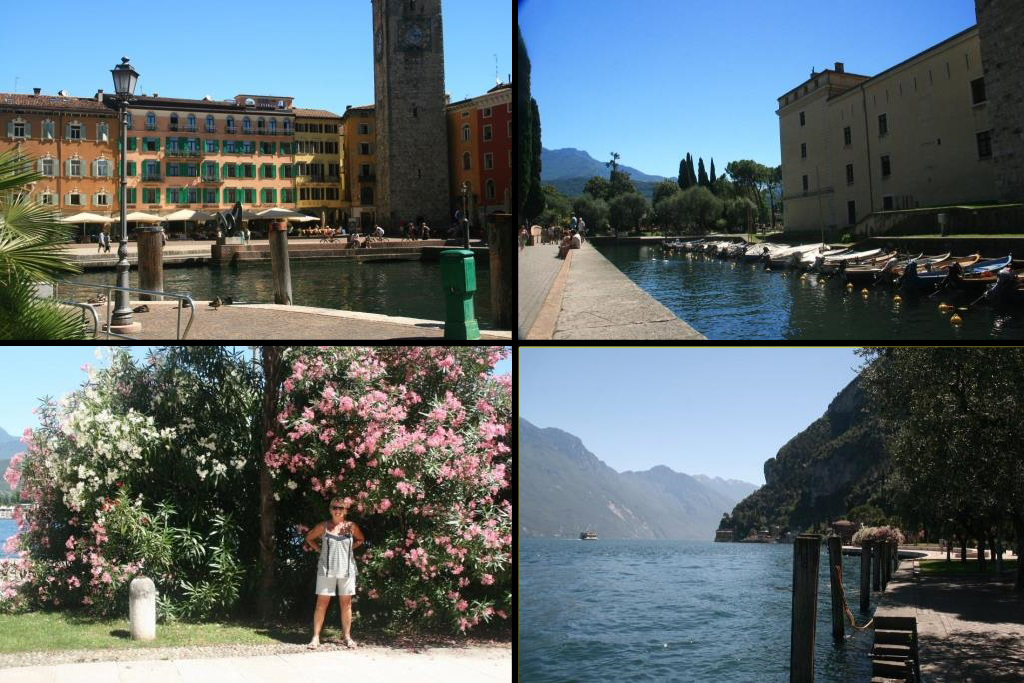 The following day we caught the ferry from Torboli to Riva del Garda which was only a 10 minute ride and spent a few hours in this lovely town before catching the ferry back. Riva with its backdrop of lake, valley and hills, was part of Austria until 1918 and is not completely typical of Italian towns. Nowadays it is in the Italian region of Trentino-Alto Adige, within the province of Trento, and is both busy and sedate somehow. Most of the activity is along the coast at Torboli but to travel down the left side of the lake you have to go through Riva. We had a very enjoyable morning drink and a lunch of a typically Italian snack, like a bruschetta.
The following day we caught the ferry from Torboli to Riva del Garda which was only a 10 minute ride and spent a few hours in this lovely town before catching the ferry back. Riva with its backdrop of lake, valley and hills, was part of Austria until 1918 and is not completely typical of Italian towns. Nowadays it is in the Italian region of Trentino-Alto Adige, within the province of Trento, and is both busy and sedate somehow. Most of the activity is along the coast at Torboli but to travel down the left side of the lake you have to go through Riva. We had a very enjoyable morning drink and a lunch of a typically Italian snack, like a bruschetta.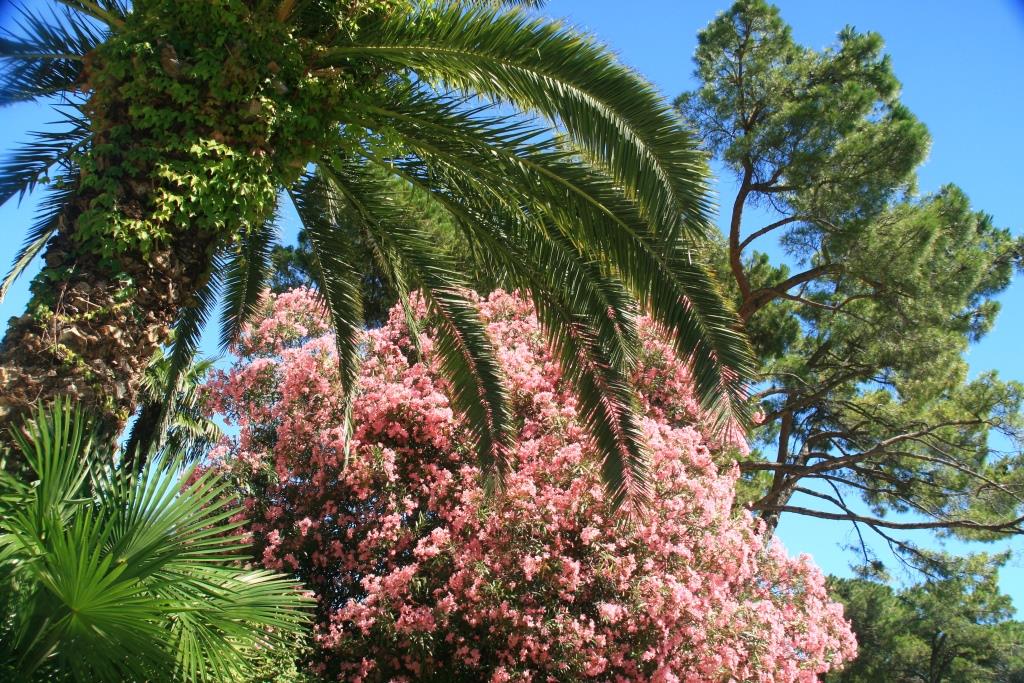 I did comment to my friends that this is really a picture of my back garden not a wonderful botanical display in Riva, but somehow they didn't believe me, I can't think why, LOL. Wouldn't it be great if we had their climate and could grow plants and trees like this.
I did comment to my friends that this is really a picture of my back garden not a wonderful botanical display in Riva, but somehow they didn't believe me, I can't think why, LOL. Wouldn't it be great if we had their climate and could grow plants and trees like this. We saw this in Riva and I must say it is very clever the way they appear to have three people supporting each other; the 'person' at the top is of course a model and there is a frame, cleverly obscured that supports the middle lady and the model. A novel way of persuading passers-by to part with their money which we did for their ingenuity.
We saw this in Riva and I must say it is very clever the way they appear to have three people supporting each other; the 'person' at the top is of course a model and there is a frame, cleverly obscured that supports the middle lady and the model. A novel way of persuading passers-by to part with their money which we did for their ingenuity. Our next trip out was to Limone and then across the lake to Malcesine before returning to Torboli. The picture is of Limone and although the name these days is inextricably linked with the lemons that were grown in abundence at one time, it was actually derived from one of two older words, either meaning border or elm (it was and is close to administrative borders). Lemon groves were brought to the shores of Lake Garda by monks in the 14th century, but it took until four centuries later for it to become established in Limone. Although lemon production flourished for centuries, it was finally hit by competition from larger and more efficient groves further to the south.
Our next trip out was to Limone and then across the lake to Malcesine before returning to Torboli. The picture is of Limone and although the name these days is inextricably linked with the lemons that were grown in abundence at one time, it was actually derived from one of two older words, either meaning border or elm (it was and is close to administrative borders). Lemon groves were brought to the shores of Lake Garda by monks in the 14th century, but it took until four centuries later for it to become established in Limone. Although lemon production flourished for centuries, it was finally hit by competition from larger and more efficient groves further to the south.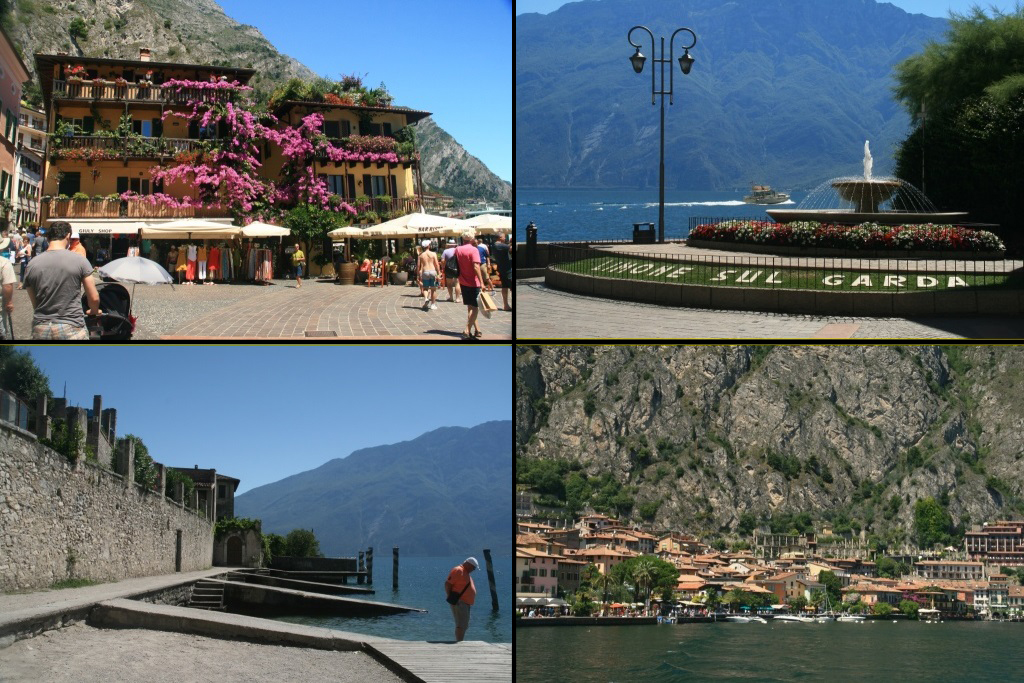 The walls bottom left are typical of lemon growing groves now in ruins; for the fruit to survive winter temperatures, the groves needed seasonal roofs and heating and the terraces with stone columns and walls are a feature of this requirement. The heart of the old town is the little harbour, the Porto Vecchio ('Old Port'), from here narrow lanes lined with tourist shops wind along the shore and up the slopes behind. We had morning coffee in one of the picturesque waterfront terraces; just a nice place to watch the world go by.
The walls bottom left are typical of lemon growing groves now in ruins; for the fruit to survive winter temperatures, the groves needed seasonal roofs and heating and the terraces with stone columns and walls are a feature of this requirement. The heart of the old town is the little harbour, the Porto Vecchio ('Old Port'), from here narrow lanes lined with tourist shops wind along the shore and up the slopes behind. We had morning coffee in one of the picturesque waterfront terraces; just a nice place to watch the world go by.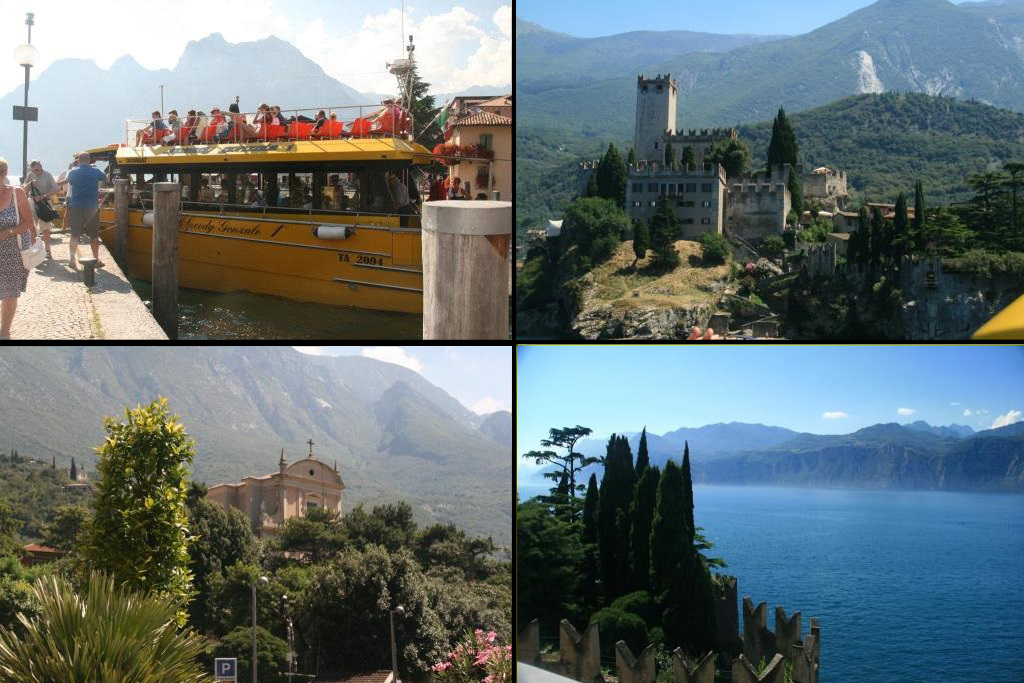 We left Limone in 'Speedy Gonzales' and made our way over to Malcesine where we had lunch and climbed the hill towards the castle. The impressive Scaliger castle shows the Scaliger influence from the time in the 13th and 14 centuries when it was controlled by the Della Scala family; it has now been declared a national monument. The other main sight to see is the church of St Stephen (the patron saint of Malcesine) which is visible from the lake in its position above the main town. Having been there on our last visit we gave that a miss. The current baroque building dates from the 18th century and houses the remains of two local saints, St Benigno and St Caro, who were reputed to have lived in a cave at the foot of Monte Baldo.
We left Limone in 'Speedy Gonzales' and made our way over to Malcesine where we had lunch and climbed the hill towards the castle. The impressive Scaliger castle shows the Scaliger influence from the time in the 13th and 14 centuries when it was controlled by the Della Scala family; it has now been declared a national monument. The other main sight to see is the church of St Stephen (the patron saint of Malcesine) which is visible from the lake in its position above the main town. Having been there on our last visit we gave that a miss. The current baroque building dates from the 18th century and houses the remains of two local saints, St Benigno and St Caro, who were reputed to have lived in a cave at the foot of Monte Baldo.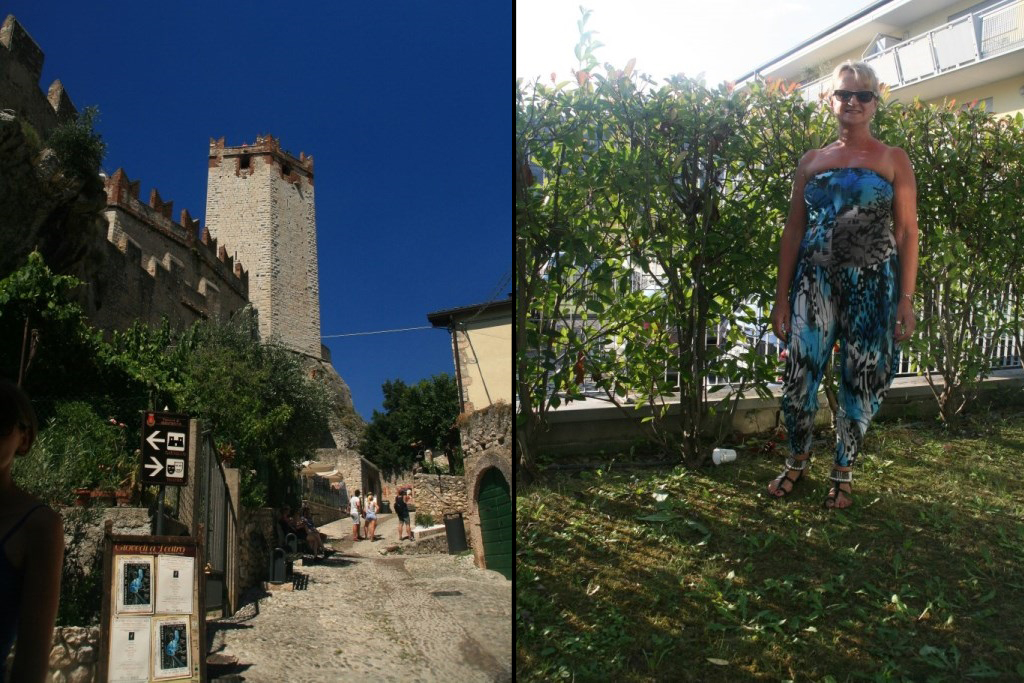 The castle is quite a climb and when we finally arrived there we decided not to go in as it was quite expensive, instead we climbed down on to an outlook platform where we took a fantastic shot of the lake from high up (shown in last slide). We returned to our hotel and dressed up for our last night before moving on to the Dolomites. During our stay at Torboli we had also visited Venice and Verona which are reported in the next two photo blogs below.
The castle is quite a climb and when we finally arrived there we decided not to go in as it was quite expensive, instead we climbed down on to an outlook platform where we took a fantastic shot of the lake from high up (shown in last slide). We returned to our hotel and dressed up for our last night before moving on to the Dolomites. During our stay at Torboli we had also visited Venice and Verona which are reported in the next two photo blogs below.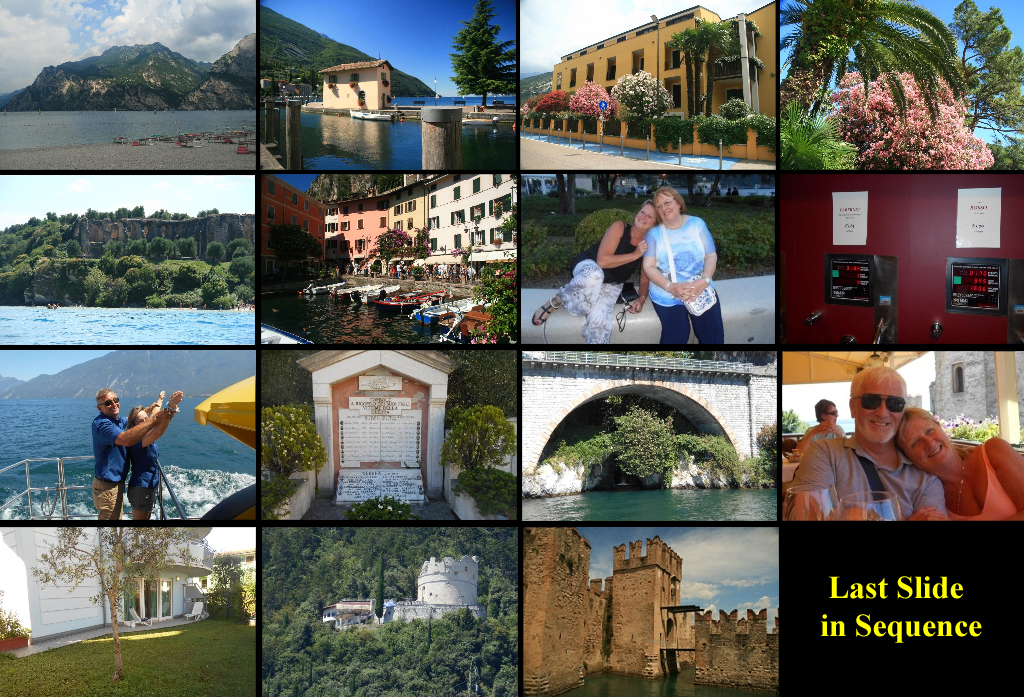 And so we left Lake Garda with some very good memories of such a beautiful place. It is unlikely that we will go there again in the near future as we have been so many times before but this does not diminish its appeal and we would thoroughly recommend this as a holiday destination to our friends and any readers out there who have yet to go.
And so we left Lake Garda with some very good memories of such a beautiful place. It is unlikely that we will go there again in the near future as we have been so many times before but this does not diminish its appeal and we would thoroughly recommend this as a holiday destination to our friends and any readers out there who have yet to go.